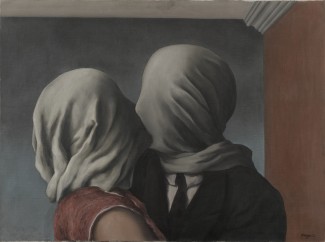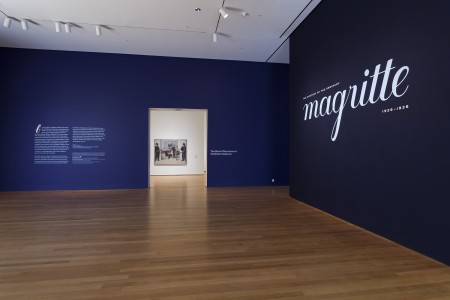REVIEW: MOMA’s ‘Magritte: The Mystery of the Ordinary’ set to close Jan. 12

NEW YORK — The Museum of Modern Art is wrapping up “Magritte: The Mystery of the Ordinary, 1926-1938,” an exquisitely detailed exhibition on the famous Surrealist painter. Featuring works of art both startling and confounding, the multi-room display tracks 13 productive years in the artist’s young professional life.
Closing Jan. 12, the exhibition can be found on MoMA’s sixth floor near the “Isa Genken: Retrospective.” Patrons enter the René Magritte display (typically after waiting in line) and wind their way through a chronological ordering of his most memorable pieces. Like Salvador Dalí and other Surrealist painters, there are many common objects in the pieces. Dalí had melting clocks, and Magritte has everything from cigars to “sleigh bells” to fragmented representations of the female body. The painter definitely developed a characteristic style, constantly cementing it and morphing it as the years passed.
The most surprising paintings are seemingly bare of ornamentation. Sometimes Magritte was satisfied by writing words in script and making the viewer picture the reality he was attempting to depict.
Some of the highlights include “Time Transfixed,” which features what looks like a child’s locomotive train emerging from a fireplace. “The Lost Jockey” represents a horse rider galloping through a forest of large architectural pieces that look almost like chess pawns. The monumentality of the pillars set against the smallness of the jockey offer perspective on this man riding through the wooden woods.
“The Meaning of Night” features haunting figures in bowler hats (another Magritte trademark) standing next to a surreal combination of dark shapes and a pale hand.
“The Lovers” is the most provocative and eeriest work on display. A man and woman grasp each other in a movie-like smooch; the romance is only dulled by the shrouds covering their faces. “The Menaced Assassin” receives the most fanfare at the MoMA exhibit. Stationed near the entrance as spectators first walk in, the enormous oil on canvas displays a female corpse and the group of detectives sent to figure out what happened. Part Sherlock Holmes-part mediation on gender differences, the piece begs for introspection.
![René Magritte (Belgium, 1898-1967). La trahison des images (Ceci n’est pas une pipe) (The Treachery of Images [This is Not a Pipe]). 1929. Oil on canvas. 23 3/4 x 31 15/16 x 1 in. (60.33 x 81.12 x 2.54 cm). Los Angeles County Museum of Art, Los Angeles, California, U.S.A. © Charly Herscovici -– ADAGP – ARS, 2013. Photograph: Digital Image © 2013 Museum Associates/LACMA,Licensed by Art Resource, NY](https://www.hollywoodsoapbox.com/wp-content/uploads/2014/01/moma_magritte_treacheryofimages-e1388780080150.jpg)
“The Eternally Obvious” dissects a woman’s body into several panels, linked together and yet distinct. From head to toes, and everywhere in between, we see the female nude as a fragmented form, retaining beauty but disconnected.
A final highlight: “Not to be Reproduced,” which depicts a man staring into a mirror but not receiving a mirror reflection. Instead, the man stares at his back, as if there were two forms of the same individual. The piece is a nice summary of the entire Magritte exhibition. The early years of this Surrealist great focused on several common themes and objects, but perhaps nothing is more apparent than his fascination with communicating through art. Replacing objects with words, showing mirrors with no proper reflection, the painter was able to go beyond the simple painter-painting-viewer experience. He beckoned viewers to fill in the blanks, to see the arbitrary nature of the art form.
By John Soltes / Publisher / John@HollywoodSoapbox.com
-
Magritte: The Mystery of the Ordinary, 1926-1938 continues until Jan. 12 at the Museum of Modern Art. Click here for more information.

